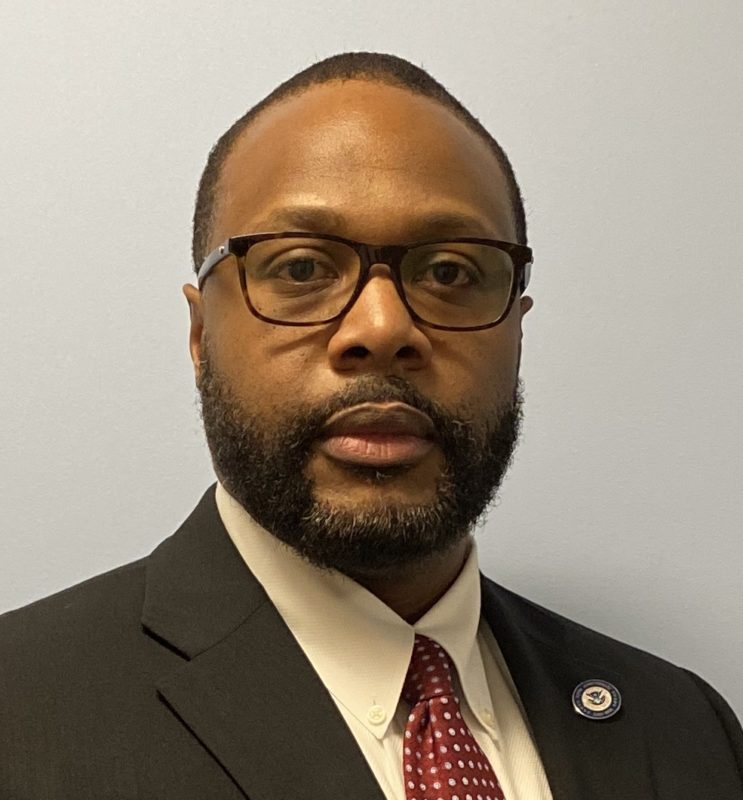
As the chief information security officer for the Science and Technology Directorate at Department of Homeland Security, Garth White is responsible for information security for all research and development programs and oversees the cybersecurity activity of a network of nationwide employees leveraging classified and unclassified systems and hundreds of R&D programs annually.
“I spearhead the prioritization of robust and scalable security solutions that include managing a network of five DHS laboratories with over 700 R&D personnel and 13 Department of Energy laboratories that are vital to our nation’s homeland security mission,” White said.
He’s also an active member of the DHS CISO Council, and has more than 20 years of experience serving in technology, security and executive-level positions for the federal government and at government technology firms.
The programs White and his teams support extend beyond DHS to other federal agencies, major universities, state/local law enforcement and private industry. The emergence of artificial intelligence, machine learning, robotic process automation, blockchain and cloud computing all help advance the DHS S&T mission. These technologies led to a DHS departmentwide implementation of the Derived Access Credentials Smartcard and implementation of the Security Center engine that tightened the Border and Coastal Information Service Program’s Integrated Multi-Domain Enterprise security posture.
In 2019, White’s team designed and implemented solutions for some of the most complicated threats including maritime, active shooter response, opioid detection and border control emerging technology.
“We deployed new robust security tools, securing 2,500 devices to enhance DHS’s ability to anticipate, identify and avert civil transportation threats,” White said.
His team also led a new Traveler Verified Information Protection program, which provides integrity checking of mobile devices deployed by more than 40 federal agencies and is estimated to save millions of dollars annually.
White is particularly honored to support the Spectrum Efficient National Surveillance Radar program. This multibillion-dollar cross-agency infrastructure program aims to modernize the nation’s aging weather and aircraft surveillance radar systems and assess the feasibility of auctioning a band of government-owned radio frequency.
Being a first-generation immigrant from Jamaica gives White a different perspective, too. His family moved to the U.S. in 1975, settling in the Maryland-D.C. area.
“It may sound cliché, but we firmly believed that: ‘In America, you can be anything you want to be as long as you work hard for it,'” he said.
Seven of his family members went on to serve in the U.S. military, and White believes the value his family placed on serving the country helped to shape who he is and his passion to directly serve the federal government.
“Who knows, maybe even the defensive mindset I learned both playing free safety for the Robert Morris football team in college and coaching afterward translated to my professional life that you must be able to not only suppress threats as they come, but also sniff them out in advance!” White said.
He strives to enable effective, efficient and secure operations across the mission by applying engineering, analytical and innovative security approaches that help prevent, respond to and recover from potential cyberattacks.
“I work closely with my teams to enable the S&T mission — the labs, the scientists, the creative professionals innovating for the DHS mission — while maintaining our security vision and enforcing FISMA compliance to strengthen the S&T security posture,” White added.
Why Watch:
In 2020, White and his team’s responsibilities monitoring the nation’s cyberthreats remain a key priority.
DHS S&T is currently working on some of the nation’s hardest challenges — developing security solutions to address global pandemic mitigation, commercial aircraft vulnerability, opioid screening and detection, border safety and security, innovative traveler scanning technology, and chemical detection capabilities.
“In order to successfully solve these challenges, we will leverage artificial intelligence, machine learning, robotic process automation, security algorithms, improved cybersecurity decision-making, network risk scoring and user/machine behavioral analysis,” White said.
And while it is important to advance technological outreach through innovation and creativity, it is critical S&T does so while safeguarding the nation’s systems, data and people.
“It’s my job to ensure that we play unmatched defense!” White said.

